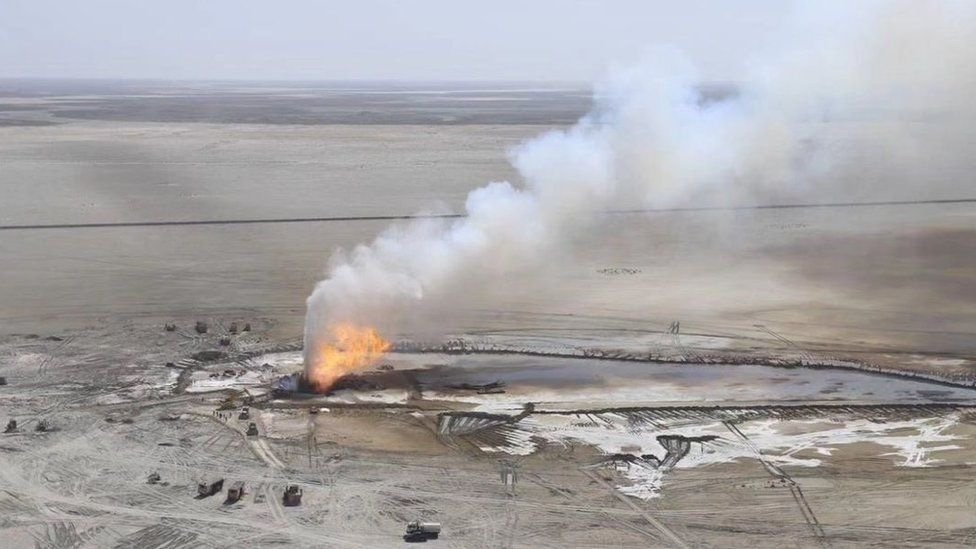Kazakhstan faces environmental crisis with months-long methane leak

An unprecedented methane leak lasting over six months at a remote well in Kazakhstan has emerged as one of the most severe environmental disasters of recent times, according to new findings disclosed to BBC Verify. It’s estimated that a staggering 127,000 tons of methane were released during the incident, triggered by a blowout igniting a fire that persisted for half a year.
Methane, known for its potent greenhouse effect, poses a significant threat to the environment, with ramifications comparable to the emissions of over 717,000 petrol cars annually, as per calculations by the US Environmental Protection Agency.
The incident, which commenced on June 9, 2023, during drilling operations in the Mangistau region, southwestern Kazakhstan, finally came under control on December 25, 2023. Efforts are currently underway by local authorities to seal the well using cement. Methane, being invisible to the naked eye, was detected using satellite technology. French geoanalytics firm Kayrros initiated the investigation, subsequently corroborated by the Netherlands Institute for Space Research and the Polytechnic University of Valencia, Spain.
Analysis of satellite data revealed elevated methane concentrations on 115 occasions between June and December, leading researchers to estimate the substantial volume of methane escaping from the well. This calamitous leak ranks among the largest man-made methane emissions on record, second only to the Nord Stream sabotage in September 2022, which released up to 230,000 tons of methane into the atmosphere. Methane emissions, responsible for about 30% of the global temperature rise since the Industrial Revolution, pose a significant challenge in combating climate change.
Despite efforts to downplay the severity of the leak, the Department of Ecology in the Mangistau region reported methane concentrations exceeding legal limits on multiple occasions. However, Buzachi Neft, the company owning the well, refutes allegations of significant methane leakage, asserting that any released methane would have burned upon contact with the borehole. External research commissioned by the company, not accessible to the public, challenges Kayrros’ findings, suggesting potential inaccuracies in satellite measurements.
An official investigation into the incident revealed lapses in supervision by Buzachi Neft during drilling operations, with subcontractor Zaman Energo also implicated for procedural failures. Kazakhstan’s Ministry of Energy acknowledged the complexity of addressing such leaks, emphasizing the absence of a universal solution to prevent similar accidents.
This incident underscores the pressing need for stringent measures to mitigate methane emissions, particularly in regions like Central Asia, prone to such super-emitter events. Kazakhstan’s commitment to the Global Methane Pledge signifies a step towards curbing methane emissions and addressing the looming environmental crisis.







